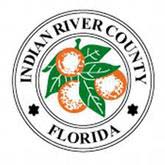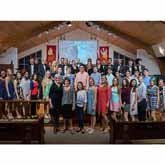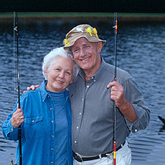A brief history of Vero Beach, Sebastian, Fellsmere & Indian River County
It was on a hot afternoon in Tallahassee in late May of 1925 that Representative Anthony W. Young -- later to become State Senator -- waited for the outcome of a vote from the Florida Senate. His bill, which would finally remove Vero Beach from the politics of Fort Pierce by creating the new county of Indian River, had initiated one of the most bitter fights ever waged in the Senate. Widely separated by political and cultural ideologies, the citizens of Vero Beach had for years resented the control that Ft. Pierce politicians exerted over their community. Prior to the vote, delegations – both for and against -- flowed in and out of Tallahassee. But on that day in late May, Young’s bill passed by a vote of 23 to 9.
The Formative Years (1840-1920)
Long before that May afternoon, Vero Beach and the surrounding areas which would eventually become Indian River County were already thriving and forging their own destiny. The flow of settlers began about the mid 1840s according to the territorial census, and by the end of the century, new communities such as Sebastian, Wabasso, Gifford and Roseland had already been established.
The greatest impetus to growth during these years can be traced to two events. The first was the creation of Henry Flagler’s Florida’s East Coast Railroad (FEC) which began service through Indian River County in 1893. It provided fishermen and growers of citrus and vegetable products with the fastest shipping possible to the northern markets. The FEC also accelerated land development. Companies purchased large tracts from the railroad (which had acquired the land from the state as part of the deal to build the railroad) and laid out entire cities - Fellsmere being the most familiar to county residents. A spur of the railroad was built linking Fellsmere to the main track in Sebastian.
The next development which impacted growth was the creation of Drainage Districts in 1905 which were part of the state sponsored Land Reclamation Program. The Drainage Districts, as their name stated, would drain millions of acres of wetlands turning these uninhabitable areas into highly productive real estate. Two of the largest privately funded companies were in Indian River County – The Fellsmere Farm Company founded in 1910, and the Indian River Farms Company founded in 1912.
As time would later prove, the creation of the Indian River Farm system under Herman Zeuch’s direction was destined for success as the design was better able to deal with Florida’s unpredictable weather, particularly rains, than the Fellsmere project of E. Nelson Fells. In July of 1915, an unusually heavy rain fell -- 13 inches in 24 hours. The storm flooded Fellsmere’s drainage ditches and nearly put the company and the town out of business. The heavy rain had little effect, however, upon Vero Beach’s drainage system.
Forefront among the industries born in that time was Indian River citrus which rapidly became the benchmark by which all other citrus products were judged. Alf B. Michael established Orchid Island Growers which set the standards for citrus production making Indian River County citrus the leader in the industry. While the citrus industry was hitting new heights, other industries were forming. In 1916, Jacksonville banking barons Bion H. Barnett and William D. Barnett, in association with former Florida Governor Francis P. Fleming, organized the Sebastian Ranch Company which would handle produce, dairy and cattle. Another enterprise, the Sebastian Land Company initiated timber and naval stores operations near Sebastian in 1919. The extraction of turpentine from pine forests near Wabasso and Sebastian contributed to Florida’s naval stores industry.
On the urbanization end, Vero began to grow. The town was laid out in 1914, and during the next 15 years, nearly four hundred miles of canals would be surveyed and dredged, and roads would be built. In 1917, the first movie theater, the Strand, was opened. The first power plant was built in 1918 by privately owned Vero Utilities Company. Unable to keep up with the need for electricity, Vero Utilities sold the plant to the City of Vero in early 1920. During that time, when electricity was a new commodity, it was common practice to run it only at night, and only on Wednesdays during the day for the convenience of women who had electric irons. It was also common when electricity failed, for the movie theater patrons to go over to the plant and help the engineers start the engines. In 1919, Vero’s first bridge was built connecting the mainland to the barrier island. The first newspaper, the Vero Press, was organized in March 1919 by Tom Campbell and Paul Nisle.
The population growth and the emergence of urbanization encouraged Vero and other communities in the area to incorporate. Vero was chartered as a town in 1919, and while many slogans were suggested to attract tourists and permanent residents, the one that has remained since then is "Vero, Where The Tropics Begin." How Vero got its name can be found on the Library's genealogy website and the Reference Room (Vero Beach City History).
As the era ended, the railroad offered a faster mode of travel and broadened the markets for citrus and produce. It also opened up venues for passenger travel. The drainage district program created better agricultural lands and industries. Cities grew and the face of Vero Beach and Indian River County changed forever.
Between the Wars -- The Twenties
Post World War I Vero began to experience incredible growth. While the railroad continued to expand its operations, the emergence of the automobile had even greater impact. Highways were created linking cities, and even the most remote regions of the state were now accessible enabling people to move about as never before.
Bridges spanning the Indian River gave rise to new residential and commercial development on the barrier islands. In the early 1920s, the Riomar Country Club was built on the barrier island by some Ohio residents who had discovered Vero's natural beauty. Elegant vacation homes surrounding the country club established the area as a premier winter vacation resort. Hotels were constructed, golf courses opened, and clubs and attractions were developed to entertain the winter visitors. The Vero Beach Yacht Club was incorporated in 1926. The famous McKee Jungle Gardens was organized in 1925 and formally opened in 1931.
In 1924, a newly built movie theater opened replacing the Strand, an older wooden structure established in 1917. The new Florida Theater was an architectural gem in the Mediterranean style that had over 600 seats and a Rotoplayer organ which provided music for the silent films. By 1925, the theater would become the pivotal point in Vero’s fight to remove the town from the grasp of St. Lucie County politicians.
The Birth of Indian River County
After years of philosophical and political differences, it was St. Lucie’s blue laws that brought everything to a head. Besides forbidding the sale of any goods on Sundays, the laws also forbid the showing of movies. In spite of the laws, the theater continued to operate on Sundays. To enforce the law, sheriff’s officers from Fort Pierce angered citizens by coming in, turning off the films and ordering patrons to leave the theater. The situation became the final weight which would crack the political stronghold St. Lucie County exerted over Vero Beach. Angry businessmen persuaded State Representative Andrew W. Young (who also happened to be Vero’s mayor and one of the movie theater owners), to sponsor a bill which would remove Vero from St. Lucie County by creating a new county. After rigorous debate, on that hot afternoon in May, 1925, Indian River County was born, and Vero became the county seat.
1925 would later be remembered for three things: the formation of Indian River County, Vero’s name being changed officially to Vero Beach, and the beginning of the end of the Florida land boom.
Florida Land – Boom and Bust
The '20s were possibly the most important era in the development of Florida. It was post World War I. The automobile had been invented which enabled thousands of people from various walks of life to visit or migrate to the state in carloads. Corporations were on the rise, and people from all classes had money -- money for travel and investments. It was a time when almost anyone could get rich, and Florida land was one of the ways. If one didn’t have cash, credit was easy to obtain. Many who bought land in Florida never visited the state, but purchased property through ads.
Forbes Magazine warned that Florida land prices were not based on anything solid such as the value of the land. All that was needed to price a parcel was someone willing to buy it. And in 1925, the inevitable began to happen. Land prices had soared to such heights that people stopped buying and those who held land wanted to sell.
The hurricane which occurred on September 18, 1926, devastated Miami and ended the land boom. If things weren't bad enough, the hurricane of 1928 swept through the northern part of Palm Beach County and created a tidal wave out of Lake Okeechobee.
On the heels of the land bust, the hurricanes, and the collapse of the stock market in 1929, many of the large cities in Florida were devastated. Vero Beach and Indian River County were not as affected by the 1928 hurricane as areas to the south. And while the land bust reversed the fortunes of many residents and businesses, the area was still a haven for many from the misery in other parts of the state. Scenic vistas along the Indian River and depressed land prices attracted some wealthy investors. At Riomar, a small building boom began in 1928. During that time, citrus production remained high as Indian River County’s agricultural business economy began to emerge. The Vero Beach Journal, organized by J. Clemment Brossier, Robert Brossier, and John F. Schumann, published its first issue in December 1925. In 1927, Schumann’s son, John J., took over the newspaper and consolidated the Vero Press and the Journal to form the Vero Beach Press-Journal. In the transportation area, airplanes were coming into use for commercial service and by the close of the decade, a site for a local airport was decided upon with the help of Cadillac dealer Bud Holman.
Between the Wars – Time of Depression and Beyond -- The Thirties
For many businesses in Vero Beach, the early thirties were a slow road back to prosperity. Construction had been halted on many projects, and other businesses went into receivership. But in spite of the Florida land bust, people continued to arrive and the population in Vero Beach and Indian River County grew, placing Indian River County 6th in the state. Roads were built to accommodate the increasing population and Route 60, which linked the Atlantic Ocean with the Gulf, became a heavily trafficked highway.
With tourists and commerce on the move and local agriculture expanding, the waterways were once again seen as a viable alternative for transporting goods and people. Deepening of the Indian River Lagoon was taken over by the Army Corps of Engineers, and continuous attempts were made to create a permanent pathway connecting the ocean and the Indian River Lagoon at Sebastian. This focus on the waterways would benefit commerce as well as private boaters who contributed a great deal to Indian River economy.
With transportation being the forefront issue, the county’s first airport was dedicated in 1930. Commercial service began in 1932 when Eastern Air Lines began using the airfield for refueling stops. In 1935, EAL instituted passenger and mail service from Vero Beach Airport.
The era had its leaders who impacted the formation and growth of Indian River County. One of the most memorable was Waldo Sexton who was highly involved in the formations of the citrus, dairy and real estate industries beginning back in 1914. He contributed to the resort image of Vero Beach with the Driftwood Inn, which in 1935, was a two-story rambling oceanfront hotel and is now listed on the National Register of Historic Places. Sexton, together with Arthur G. McKee, a former engineer who developed an interest in tropical plant culture, created the world famous McKee Jungle Garden just south of Vero Beach.
To help cushion the effects of the depression, Franklin Delano Roosevelt’s New Deal created construction projects that put people to work and bettered the communities. Vero Beach and Indian River County benefited from these projects which included the construction and installation of sidewalks, parks, streets, and water and sewer lines. The County Courthouse was completed in 1937 with assistance from the Public Works Administration under the New Deal. The Vero Beach Community Building, dedicated in 1935, was also a product of that time and the U.S. Government’s assistance. It currently houses the Indian River Citrus Museum and is listed in the National Register of Historic Places. The Press Journal building also received a face lift in 1937. Archeological investigations were also funded under the New Deal which contributed to Spanish findings and the Spanish Fleet & Salvors Camp Site being listed in the National Register of Historic Places.
During the 30s, Indian River Memorial Hospital, the area’s first hospital, was organized by Nurse Garnett Radin, Dr. E. Bacon Hardee and funeral director Charles Cox. The first location was a 2-story tourist home south of the city limits which opened May 12, 1932. It had two more sites before arriving at its permanent location on 37th Street between US 1 and Indian River Boulevard in the 1980s.
By the end of the decade, war clouds were gathering. Some far sighted local citizens initiated further development of the Vero Beach Airport facility by installing permanent runway lights and adding radio and teletype machines. In 1939, using Public Assistance workers, the runways were extended and one year later the Civilian Aviation Administration spent an additional $250,000 on additional improvements. And the airport, which came into being at the start of the decade, would become a major player as the U.S. became involved in World War II.
The Forties – Time of War and After
In the early forties, the focus was on war. In 1942, the U.S. Navy notified Vero Beach officials that it had selected their municipal airport as the site for a Naval Air Station and purchased an additional 1,500 acres surrounding Vero Beach Airport. The base was formally commissioned in 1942. Pilot training at the NAS began in February 1943. At the peak of its activity, the NAS held 1,400 servicemen and 250 planes. After the war ended, the NAS was reduced to a skeletal staff. Then in 1947, the Navy closed the Station and returned the airport to the city.
The end of the war brought about tremendous growth in Indian River County. Soldiers who had trained here during the war returned to make it their home. The area still had wide open expanses of undeveloped beach front property, inexpensive housing, relatively low property taxes and its warm climate. At the time, the county had 9,000 residents and Vero Beach, 3,600.
The end of the war found a climate for tremendous business growth. Advances in technology created new markets for citrus. A product created for war time, frozen orange juice concentrate, would revolutionize the citrus industry. Tourism returned to dominate the economy and life in postwar Vero Beach and Indian River County. Indian River cattle ranching which had its roots in the early part of the century came of age during the post war years as cattle shared the land with oranges and grapefruit.
One of the highlights of the post-war era came in 1948 when the Brooklyn Dodgers selected Vero Beach as their spring training site. A 109-acre tract, part of the naval air station, was developed into a complex of practice fields, dining, housing and training facilities. The dedication ceremony for Dodgertown was held in March of 1948. Four years later, the stadium was renamed Holman Stadium in honor of Bud Holman who was credited with bringing the Dodgers to Vero Beach.
The Fifties and On
Agriculture and cattle ranching came into its own. Housing flourished both on the mainland and barrier islands. Schools and churches were developed. Recreational areas and parks began to show up all over the county. New bridges were built across the Indian River Lagoon. However, the biggest contributors to growth were – mosquito control efforts by the government and the adapting of air conditioning for residential use.
In 1957 Piper Aircraft arrived. Vero Beach was selected for their research and development center which was built on the grounds of the former naval air station. In 1961, Piper moved its administrative and manufacturing operations from Pennsylvania when a 150,000 square foot addition was completed. By 1967, Piper had expanded its facility to eleven acres and its work force to over 2,000 employees.
Construction of the A1A bridge over Sebastian Inlet began in 1962. A 200 foot wide, 11-foot deep channel was excavated to the east of the proposed bridge on A1A. The bridge was opened in February, 1965.
During this time, the cultural side of Vero Beach came of age. The Vero Beach Theatre Guild held its first production in 1958. The Vero Beach Concert Association opened its first season in 1966-67. Riverside Theatre opened its doors in 1974, and the Center for the Arts on January 31, 1986.
As the century came to a close, growth continued. All of the barrier islands south of County Road 510 to Vero Beach were developed or under development. Ninety-eight percent of Vero Beach was built out. To the north, houses were appearing in the once wooded areas of Sebastian, and Fellsmere once again experienced growth.
The Future – Guarding Our Uniqueness
The seeds of what make Vero Beach and Indian River County unique began back at the turn of the century when one of the first Sebastian settlers, Paul Kroegel became concerned about the extermination of brown pelicans. Together with other ornithologists, he asked the Federal government for assistance. In 1903, Pelican Island in the Indian River Lagoon was designated a federal preserve by President Theodore Roosevelt. This landmark move created the country’s first wildlife refuge.
In the years to follow, city layouts that incorporated parks and embraced a philosophy to re-use rather than demolish dominated development. With history and preservation woven into its fabric, Vero Beach and other towns in Indian River County did not follow the gospel of urban development that has dominated much of the rest of Florida during the last half of the 20th century.
Careful planning and preservation has, at its heart, the people who created it; people who had foresight, a love of land, and the determination to see dreams become reality. While the automobile and increased tourism created ribbons of highways overlaid with strip malls in other parts of Florida, Indian River County restricted these developments to planned, designated intersections. Like a patchwork quilt, residential areas and green space were incorporated into the plan making the areas visually appealing. Organized growth rather than unfettered urban sprawl is what helps Indian River County and Vero Beach retain the ‘small town’ flavor.
A sense of history threads itself throughout all of Indian River County. Ever-watchful historical societies continue to guard the cities and counties architectural character. When the National History Preservation Act was approved by Congress in 1966, Vero Beach and Indian River County quickly began efforts to have buildings and places registered. Today, old buildings worth saving are restored … and sometimes moved if necessary. All of the towns as well as Indian River County have their own preservation societies.
It’s been nearly 77 years since that May afternoon when Representative Andrew W. Young waited for the outcome of the vote on Indian River County. The past is what the future is made of. While Indian River County and Vero Beach are not without change, there is great effort to retain the sense of place that attracted people to the area in the first place
Acknowledgements and credits:
Photographs:
Florida Photographic Collection, Florida Department of State·Division of Library & Information Services·Bureau of Archives & Records Management· 500 S. Bronough St.· Tallahassee, FL· 32399· 850.245.6700
The Florida Department of Citrus, P.O. Box 148, Lakeland, Florida 33802-0148 USA
Reference:
Florida's Hibiscus City Vero Beach, J. Noble Richards, published by Brevard Graphics, Inc., Melbourne, FL, 1968
A History of Indian River County, Sidney J. Johnston, published by The Indian River Historical Society, 2636 14th Ave, Vero Beach, FL , 2000
Florida In The 1920s, from The Floridians, a Social History of Florida, THE FLORIDIANS is an interactive Florida history text book with photographs, maps, sample questions, and workbook pages. Created by: M. C. Bob Leonard, Professor of History, Hillsborough Community College, Tampa, Florida.
The Overseas Railroad: A Man and His Dreams, sponsored by www.Railfan.net a Railfan Network.
The George Keyes Collection on the history of the Sebastian River area. These archives can be viewed online at the Sebastian Library.

Indian River County Administration
1801 27th St, Vero Beach, FL 32960ph: (772) 567-8000
Indian River County was created in 1925. It was named for the Indian River Lagoon, which runs through the eastern portion of the county.

 Cultural Council of Indian River County
Cultural Council of Indian River County
 The Rosato Plastic Surgery Center
The Rosato Plastic Surgery Center
 Indian River Estates
Indian River Estates
